Multiplication and Division
| Site: | WelTec Moodle |
| Course: | Learning Services |
| Book: | Multiplication and Division |
| Printed by: | Guest user |
| Date: | Monday, 6 May 2024, 7:36 AM |
Description
An introduction to multiplication and division of whole numbers including examples and practice questions.
Introduction
Numbers have been used to pass on information for many thousands of years. Throughout history, people have used numbers to combine information and summarise it. Today, there are four ways of doing calculations:
1. Mental math: all calculations are done in your head.
2. Pen and paper: you break down the calculations you have to do on paper.
3. Calculator: you use a calculator to solve your problem.
4. Computer: you use computer software like Microsoft Excel to work out the calculations you need to do.
While it is helpful to have access to calculators and computer software, there are helpful strategies to be able to do mental math more easily.
For example, a useful way to improve your mental multiplication and division is to draw and count the number of groups:
If you need to multiply 3 x 2, one way of doing this is to count the total of 3 groups of 2.
Use the arrows to view the multiplication examples and practice activities, or click the link below to download a printable guide to multiplication.
Example 1
Work out the answer to 3 x 2
Solution
3 x 2 means three groups of two

In total there are 6 dots
3 x 2 = 6
Practice Question 1
Work out the following multiplication questions either in your head or by drawing groups of dots.
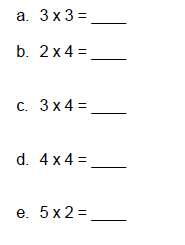
Check your answers using a calculator.
Example 2
Division is the opposite of multiplication. Just like with multiplication, you can use groups to work out the answer to division questions.
Work out 8 ÷ 4 (which can also be written as 8/4)
Solution
This problem is asking you to work out 8 divided by 4, or 8 shared by 4.
Draw 8 dots.

Try to form equal groups of 4.

There are 2 groups.
8 ÷ 4 = 2
Practice Question 2
Work out the following questions in your head or on paper.
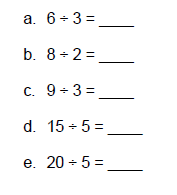
Example 3
Work out the answer to the following. You can draw dots on paper or work it out in your head.2 x 2
2 x 3
2 x 4
2 x 5
2 x 6
2 x 7
Solution

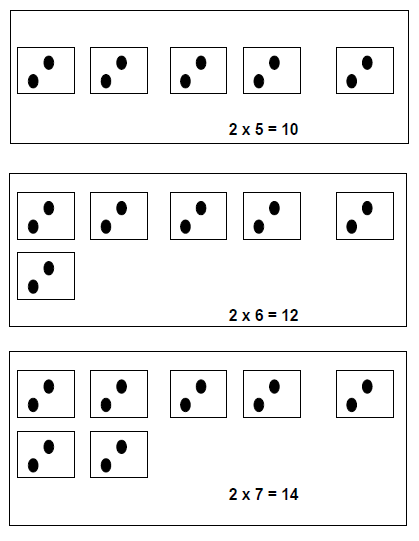
Practice Question 3
Work out the answers to the following. Draw dots and groups or work out the answers in your head. Check your answers with a calculator.
3 x 2 4 x 2 5 x 2
3 x 3 4 x 3 5 x 3
3 x 4 4 x 4 5 x 4
3 x 5 4 x 5 5 x 5
3 x 6 4 x 6 5 x 6
3 x 7 4 x 7 5 x 7
3 x 8 4 x 8 5 x 8
3 x 9 4 x 9 5 x 9
3 x 10 4 x 10 5 x 10

Example 4
There are many times in real life when you may need to do a calculation without a calculator. It can be useful to write the problem out.
Work out 31 x 2 without a calculator.
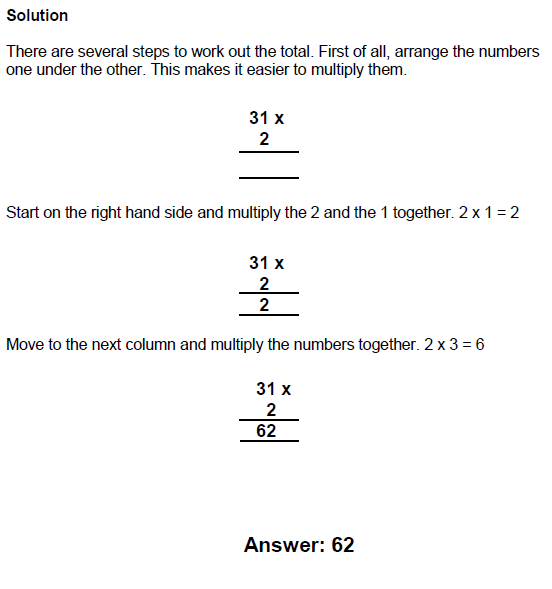
Practice Question 4
Work out the following questions without using a calculator:
42 x 3
34 x 2
54 x 2
64 x 2
43 x 3
Example 5
Work out 32 x 23 without using a calculator.

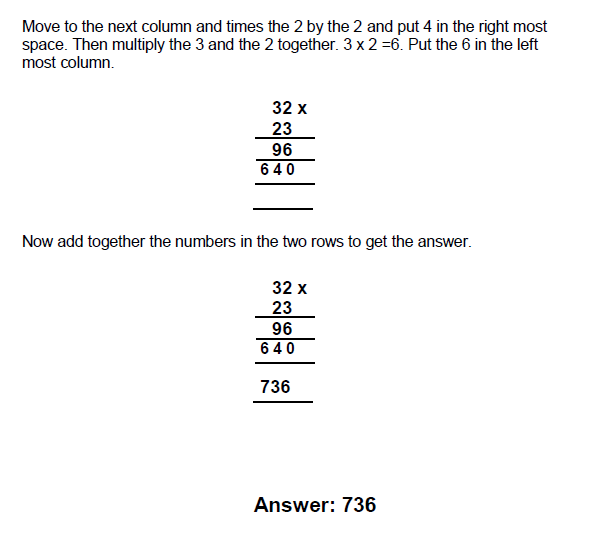
Practice Question 5
Work out the following questions without using a calculator:
24 x 21
32 x 14
23 x 12
41 x 24
12 x 32